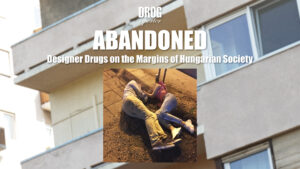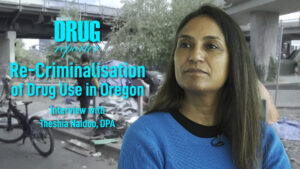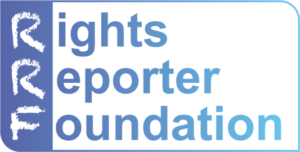IFLScience, one of Facebook’s biggest science advocacy page recently headlined a study that “New Study Finds Marijuana Safer Than Alcohol Or Tobacco” [1]. While this is a catchy title, the paper only partially supports the statement. In this edition of Dose of Science we are going to take a close look at the original research article [1] to examine whether weed is really safer than alcohol.
| DOSE OF SCIENCE ON DRUGREPORTER! We are happy to announce a new column on Drugreporter, the "Dose of Science". This new blog aims to educate the public about drug science. Every month, the summary of a peer-reviewed scientific paper will be presented. The studies discussed are focussed on, but not limited to, research on recreational drugs. By presenting scientific findings to a wider audience, Dose of Science hopes to raise awareness of the real dangers of drug use and dispel myths at the same time. Here is the first instalment of the Dose of Science, examining whether the 'margin of exposure' can be used as a rational, quantitative assessment of a drug's harm.
|
The study aims to rank the risks associated with various legal and illegal drugs. Such a ranking could clearly be valuable to both substance users and policy makers. Previous studies of this kind were based on expert opinion panels [3,4], where the ranking of drugs took place without reference to any external objective measure. Hence these papers are often labeled as susceptible to bias.
 This new study aims to counter this criticism by using the ‘margin of exposure’ (MoE) as a quantitative assessment of risk. MoE has its origins in chemical safety regulations, and is defined as the ratio between the dosage associated with a negative outcome and the typical human intake dosage. In this study, the negative-outcome dosage was represented by the BMDL10 dose.
This new study aims to counter this criticism by using the ‘margin of exposure’ (MoE) as a quantitative assessment of risk. MoE has its origins in chemical safety regulations, and is defined as the ratio between the dosage associated with a negative outcome and the typical human intake dosage. In this study, the negative-outcome dosage was represented by the BMDL10 dose.
So what is the BMDL10 dose? BMDL10 stands for ‘benchmark dose level 10%’ and it is closely related to the more recognised LD10 (‘lethal dose 10%’, i.e. 10% of animals treated with that dosage will die). Typically, there is considerable uncertainty when estimating LD10, therefore researchers often report the 95% confidence interval (95% CI) of LD10, rather than a single value: The 95% CI is a range of possible LD10 doses, with a 95% probability that the true value of LD10 lies within the stated range. BMDL10 stands for the worst case scenario of the 95% CI – that is, the lowest dose in the 95% CI range. To make calculating BMDL10 even more uncertain, there are large variations between species (rats, mice, monkeys, etc). For example, based on experiments with mice, the BMDL10 for alcohol is 338mg/kg, but data from rats suggests a figure of 692mg/kg. Therefore in the calculation of MoE not a single value for BMDL10 was entered, but rather a probability distribution of possible values.
In the same way that there are uncertainties regarding the BMDL10 dose, there is also a lack of reliable information on typical human intake, especially in respect of illegal drugs. For this reason, typical human intake was estimated from the academic literature and internet sources. Again, in order to allow for uncertainties about the typical dosage, the authors have used a probability distribution in their calculations, rather than a single value. Note, that in the case of alcohol and nicotine, reliable data was in fact available, but the authors have applied the same methodology as for illegal substances, for consistency.
In summary, MoE is the ratio of the estimated BMDL10 values and the estimated human individual consumption. Therefore, the higher the MoE, the safer a substance is. Typically in safety regulations a substance with MoE > 100 is considered safe, while MoE < 10 indicates high risk. The Figure below shows the estimated MoE values for individuals.
Margin of exposure for daily drug use estimated using probabilistic analysis (left red bar: average; error bar: standard deviation; right grey bar: tolerant user (diazepam is a prescription medicine used to relieve anxiety). Figure and caption taken from [2] (Creative Commons Attribution-NonCommercial-ShareAlike 4.0 International License).
It is clear that the legal and illegal substances do not form discrete groups – for example, amphetamine derivatives have a similar MoE to that of nicotine. It is also noteworthy that this ranking is congruent with the aforementioned expert ranking panels. The authors have also conducted a population-based MoE that takes into account the prevalence of drugs. That data is not presented here, but the rankings are similar.
Note that, according to this ranking, cocaine would appear to be a safer drug than alcohol – but is that really the case? No, not really. The problem is that MoE only takes death into account, as a possible negative outcome of substance use. Drugs, however, can have a range of negative outcomes other than lethality. For example MDMA might have a high MoE, but it is also a neurotoxic chemical. This danger of MDMA use is not taken into account by the MoE, since death is the only adverse outcome for which it allows. The simple reason why adverse outcomes other than death are not included, is the lack of data. If data were available as to the level of dosage at which a given chemical is associated with a given risk, then the MoE could be calculated for each risk of each agent, using the same methodology.
So what was learned from the paper and what further research does it suggest? The research ranks the dangers of drugs as quantified by the margin of exposure. The MoE is the ratio between the BMDL10 dose and the estimated typical human intake. Both terms can only be estimated broadly, so there is significant uncertainty about what the true MoE values might be. MoE should not, therefore, be interpreted as an absolute measure, but rather as a tool to judge the relative risk of drugs. The weakness of the study, is that it only allows for death as a possible negative outcome of substance use. In their discussion the authors outlined this limitation to their study. To improve the accuracy of the MoE calculations and to include other possible negative outcomes in the calculations, the broader dosage-response relationship of each substance would need to be known. Despite these shortcomings, this paper provides a valuable asset to policy makers. As has been argued elsewhere, it is better to base policy on science with limitations, than on no science at all [5].
Balázs Szigeti
References:
[1]:http://www.iflscience.com/health-and-medicine/new-study-suggests-risks-marijuana-use-have-been-overestimated (accessed on 2015 X 23)
[2] Lachenmeier, Dirk W., and Jürgen Rehm. "Comparative risk assessment of alcohol, tobacco, cannabis and other illicit drugs using the margin of exposure approach." Scientific reports 5 (2015)
[3]: Nutt, David, Leslie A. King, William Saulsbury, and Colin Blakemore. "Development of a rational scale to assess the harm of drugs of potential misuse." The Lancet 369, no. 9566 (2007):1047-1053.
[4]: van Amsterdam, Jan, et al. "Ranking the harm of alcohol, tobacco and illicit drugs for the individual and the population." European addiction research 16.4 (2010): 202-207.
[5]: Fischer, Benedikt, and Perry Kendall. "Nutt et al.’s harm scales for drugs – room for improvement but better policy based on science with limitations then no science at all" Addiction 106.11 (2011): 1891-1892.





